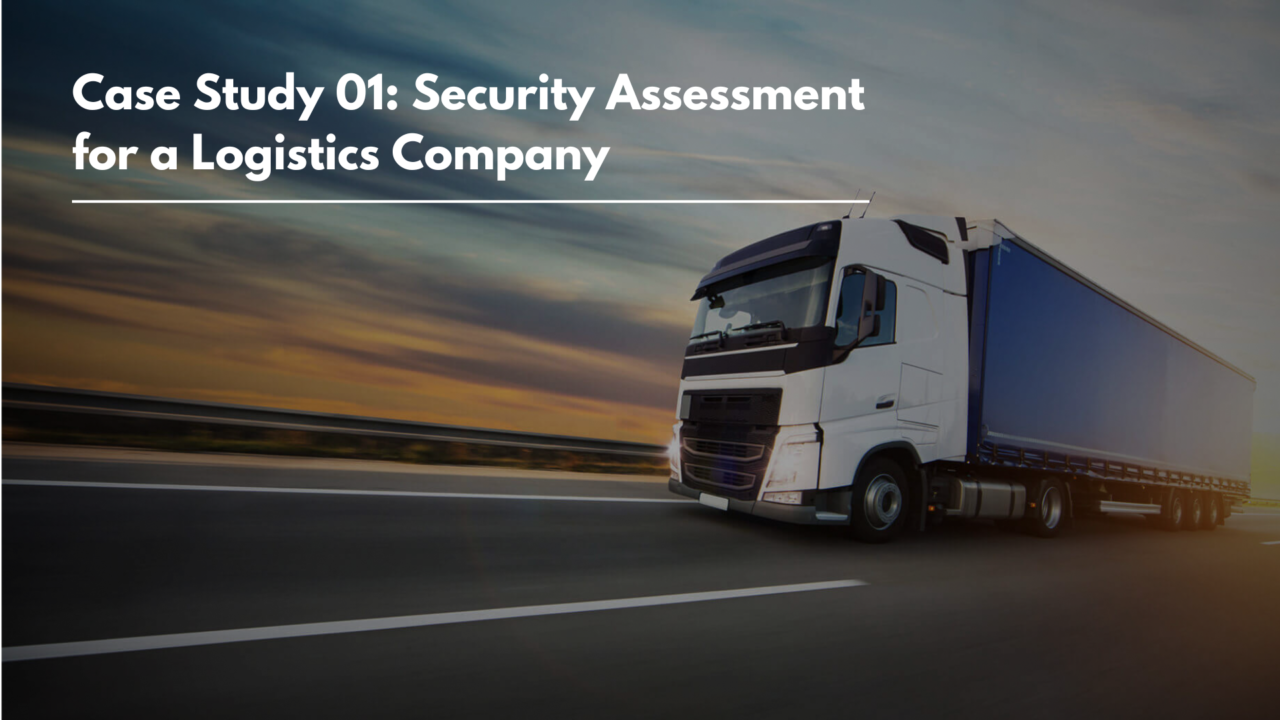Client Overview: Our client is a prominent logistics company operating a vast network of distribution centers and transportation hubs. They manage critical data related to shipments and inventory, relying on robust IT infrastructure to ensure seamless operations. Acknowledging the importance of securing their digital assets, the client sought a comprehensive Vulnerability Assessment and Penetration Testing (VAPT) to identify and address potential vulnerabilities within their infrastructure.
Challenge: The client faced growing concerns over the security of their IT infrastructure, particularly given the increasing frequency of cyberattacks targeting the logistics industry. They needed a thorough on-site Vulnerability Assessment and Penetration Testing (VAPT) to uncover any security gaps, particularly in their wireless networks, and to ensure that their employees were adequately prepared to handle emerging cyber threats.
Scope: Network
Engagement Overview: At Securze, we believe in a client-first approach, and our engagement with a key logistics sector client reflects that commitment. The client, managing a vast network of operations across multiple locations, required a thorough review of their IT infrastructure to ensure that sensitive data and critical assets were protected against emerging cyber threats.
We conducted a two-week on-site Vulnerability Assessment and Penetration Testing (VAPT) engagement across two of the client’s key office locations. Our goal was to identify potential vulnerabilities in their network infrastructure, including desktops, servers, laptops, firewalls, access points (APs), and wireless systems. Through this engagement, we aimed not only to identify security gaps but also to collaborate with the client’s IT team to patch and address the issues, ensuring their infrastructure remained secure and resilient.
The Approach: We took a comprehensive approach to this engagement, performing the following key activities:
- Penetration Testing (Pen Testing): We evaluated the client’s network infrastructure, which included critical production servers, desktops, laptops, and access points (APs). Our team simulated real-world cyber-attacks to identify exploitable vulnerabilities in the client’s network, ensuring that no area of their infrastructure was left untested.
- Firewall and Access Point Configuration Review: We thoroughly reviewed the firewall configurations and AP settings, identifying potential misconfigurations that could expose the organization to unnecessary risks. This included reviewing network segmentation, access control policies, and firewall rules.
- Wireless Penetration Testing: A key focus of the engagement was wireless security. Our team performed penetration testing on their wireless infrastructure to evaluate if unauthorized individuals could gain access to the network, as APs can often be an entry point for attackers.
- Vulnerability Identification and Reporting: Once we identified the vulnerabilities, we provided the client with an in-depth report detailing each issue, its potential impact, and actionable remediation recommendations.
- Collaborative Remediation: Security doesn’t end with identification. We worked closely with the client’s IT team to help them patch security issues in real time, ensuring that their systems were secure and protected against both internal and external threats.
Key Findings and Actions Taken
- Outdated Servers and Access Points: During our assessment, we identified that the client’s servers and access points (APs) were running outdated versions, leaving them vulnerable to exploitation. Many of these systems were no longer receiving security patches from the vendors, posing a significant risk to the infrastructure. We strongly recommended that the client immediately update these systems to the latest stable versions to ensure the security of their environment.
- Breach Exposure and Stolen Employee Credentials: One of the most alarming findings was the discovery that the client’s data had been breached in the past, and employee credentials were found on the dark web. These credentials were compromised through stealer logs – malware that captures and exfiltrates login information from infected machines. Upon uncovering this, we immediately reached out to senior management to notify them of the breach. We provided guidance on the necessary mitigation measures, including password resets, enhanced authentication methods, and malware scans for all affected devices.
- Email Security – Phishing Attack Mitigation: Although email security was not part of our original scope, we noticed that the client’s email server lacked essential DMARC and SPF records, which left the organization vulnerable to phishing attacks targeting employees and senior executives. Phishing attempts had already been successful, and some employees had received fraudulent emails. To resolve this, we recommended the addition of these email server records to the client’s email server. This action would greatly reduce the likelihood of spoofed emails entering their ecosystem and prevent attackers from impersonating the company. The client quickly implemented these changes, leading to a significant reduction in phishing attempts.
- Cybersecurity Training for Employees and Executives: Security is not only about systems and software; it’s also about people. We provided tailored cybersecurity training for both the client’s employees and senior executives. The training sessions focused on the latest cybersecurity threats relevant to the logistics sector, as well as practical tips on how to safeguard against common attack vectors like phishing, social engineering, and ransomware.
- The training sessions were highly interactive and included real-world scenarios that allowed employees to engage with the material. To test their knowledge, we conducted a quiz round, where employees answered complex, tricky, and scenario-based questions. This gave employees a chance to think critically about potential cyber-attacks and apply their learning in a safe environment.
- Patch Management Challenges: After submitting our initial VAPT report, we discovered that the client was struggling with patch management, which was preventing them from quickly addressing vulnerabilities. To assist, we provided guidance on implementing automated patch management strategies that could be applied to their infrastructure. Through these automation techniques, we helped the client resolve over 50% of the identified vulnerabilities, greatly improving their overall security posture.
Though patch management was not part of our original scope, we went above and beyond to assist the client in developing a strategy for ongoing patch management. We recommended both open-source and commercial patch management solutions, ensuring they could keep their systems up to date and protected from known vulnerabilities in the future.
Retesting and Final Report: Once the client had implemented many of the suggested remediation actions, we conducted two rounds of retesting to ensure that the vulnerabilities were adequately addressed. We also reviewed the security improvements and provided further recommendations for strengthening their infrastructure.
After completing the retests, we submitted the final report with our remarks on the overall security improvements, as well as recommendations for additional strategies to further enhance their security defenses. This report was delivered with clear action items, providing the client with a roadmap to continuously improve their cybersecurity.
Conclusion: This engagement highlighted the importance of a comprehensive approach to cybersecurity, especially for companies in critical industries like logistics. Through a detailed on-site VAPT assessment, we identified several vulnerabilities and risks that could have jeopardized the client’s operations. However, by working closely with the client’s IT team, providing real-time remediation support, and going beyond the initial scope of the engagement, we were able to make a meaningful impact on their security posture.
At Securze, our commitment is to our client’s growth and security. Not only did we help secure their infrastructure, but we also empowered their workforce through interactive training, ensuring that they are better equipped to recognize and respond to cyber threats in the future. Our proactive approach and continuous support reinforced a strong culture of security within the client’s organization, making their systems more resilient to the evolving cyber threat landscape.
We remain dedicated to helping our clients succeed and grow securely, and we were proud to play a key role in strengthening this logistics provider’s security framework.


